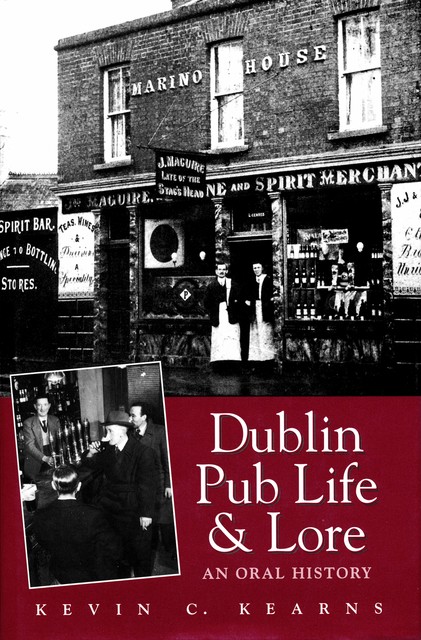Dublin Pub Life and Lore – An Oral History of Dublin’s Traditional Irish Pubs
515 štampanih stranica
- Vlasnik autorskih prava
- Bookwire
- Prvi put objavljeno
- 1996
- Godina izdavanja
- 1996
- Izdavač
- Gill Books
Citati
- ipatje citiraoпре 4 годинеRecognising the social changes, publicans began to install attractive lounges with comfortable furniture where couples could drink together. After wives became accepted in pubs, single women gradually appeared on the scene. During the 1960s and 1970s segregated pubs toppled like dominoes. Those local neighbourhood pubs which continued to bar women were condemned, and sometimes even picketed, by feminist groups as dark dens of male chauvinism as the regulars were viewed as a mean pack of sexist Neanderthals. Walsh’s public house in Stoneybatter was probably the last truly segregated pub in Dublin. Tom Ryan, head barman at Walsh’s for fifty years, still refused to seat women at the bar in 1988 when he confidently proclaimed, “It’s a male preserve. Men prefer to be on their own. I know this from experience. Women just wouldn’t fit in.” Ironically, a woman owned the pub. In 1990 she sold the public house to new owners who opened the establishment to women on an equal basis—and Ryan decided the time had finally come to retire
- ipatje citiraoпре 4 годинеSome of the safest IRA pubs, he reveals, were the following: Kirwan’s, the Seven Stars, and Phil Ennis’s pubs in Parnell Street, Backhand pub in Coleraine Street, Macken’s in Church Street, “Big Macken’s” pub in North King Street, McGowan’s in Francis Street in the Liberties and Walsh’s pub in Stoneybatter which was a “notorious” house for harbouring IRA men on the run. Other well-known safe pubs back in the 1920s and 1930s were O’Hagan’s in Cumberland Street, the Barrel in Benburb Street and Leach’s on Drumcondra Road. All had pub staff who were active in the Movement which gave them their “safe” status
- ipatje citiraoпре 4 годинеthere was a network of “safe pubs” in Dublin where IRA activists regularly met to exchange information, plan missions and stash weapons. Historically, these public houses played a significant role in the political life of the city. Oral testimony from surviving IRA members, publicans and regulars who personally participated in or observed these manoeuvres in old pubs confirm their value to the Movement. Most such public houses were in the poor tenement neighbourhoods around the northside, Monto and Liberties. Among the lower classes there was much anti-British sentiment and support for the “cause”. Here, in the local pubs, IRA men felt safe in their dealings
fb2epub
Prevucite i otpustite datoteke
(ne više od 5 odjednom)


